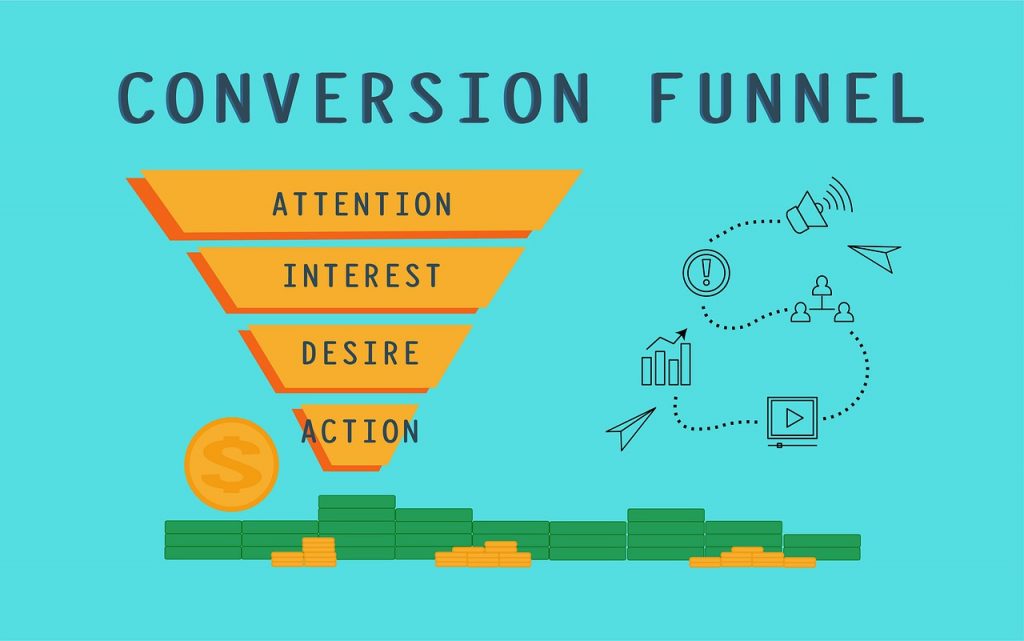
The Importance of Sales Funnels
Techniques and strategies in the realm of business are always changing and evolving. It is easy to look around and see this happening right before our very eyes. As social media advances and takes over our world, it is critical that we adapt with this in our sales methods.
Of course, there are plenty of ways that many companies are doing this. Creating social media pages and engaging with potential and current customers is one method. This is particularly effective currently, but there are other ways as well. The one I will discuss in this article today is the sales funnel.
Table of Content
What is a Sales Funnel?
Think about the shape of a funnel. It is large at the top, and slowly goes in until there is a small tunnel at the bottom. Usually, we think of them as equipment in a science lab or something for cooking – I know I use them quite often when baking. However, the concepts behind them can be applied to sales as well.
When used in this manner, it is the steps that consumers take to become your customer. If you would like a bit more information on this topic you can look here, but there are plenty of resources available. What is most important is that it is a step-by-step process.
Top of the Funnel
For the top of it, you have marketing. While we might consider this something separate from sales (and it is, for the most part), that does not mean that they do not work in tandem. Advertising builds awareness for a product, after all.
This is particularly important if there are no more “hot” leads available. While those make for the fastest and most simple sales, the more reluctant consumers can be swayed by marketing campaigns. That is why this is the first step in the process.
The Front End
So – the consumer is now aware of your product. What is next? Well – it is interest. This is where you hook customers in and show them the value and benefits of the goods in question.
If you are uncertain how to do this, that is okay. There are plenty of options for step by step sales funnel optimization that you can seek out. What is most critical here is that you do not scare any potential buyers away.
Do not smother them in information only about the product. Instead, try to help them in other ways and demonstrate to them that you are an expert in this field. This is how you can really pique their interest in what you have to say.
The Middle
This is the step where a customer makes a decision. Typically, they will be considering a few options. The goal is that you are one of those potentials. If that is the case, you can proceed by offering a deal or other best offer.
There are a few examples of this, such as providing a bonus product or offering free shipping. Ideally, this will convince the buyer to move on to the final part of the process.
The Back End
This is the final step in a sales funnel. It is when the customer at last takes action and purchases the goods or service you are providing. Now, do not get complacent – you should look to retain any consumers who fall into this category. That is how you maintain a healthy business.
Why Does This Matter?
Maybe you have been reading this and thinking to yourself that all of this “stuff” is obvious or unnecessary to learn about. I understand that point of view, but I do think this is a method that can help a business to succeed – perhaps even over their competitors. Landing the sale is only one part of the process, after all.
If you decide to create one for your company, it may feel overwhelming or complicated. It may even feel out of reach and not worth the trouble. However, if you want to identify reasons that consumers may not be finalizing their sales, it is a good place to start.
After all, if you illustrate the funnel and all of the different steps a customer takes as they consider your product, you can locate “holes” in the process. This is where they may “fall out” of the funnel and stop thinking about making a purchase. The end goal is to avoid this if at all possible and to seal these holes.
They also help you be able to visualize the process from the point of view of a potential consumer. Sometimes this can be difficult. After all, most of us will forget this part at one point, at least – we all think our own creations are worth buying and have high value. It can be easy to slip up as far as convincing other people of this as well.
Business analysis is probably the biggest benefit of creating one. There should be someone (or perhaps even a team of people) in charge of watching each stage within the funnel, from the marketing to the back end. Nothing should go ignored.
Something to keep in mind that I have not really touched upon yet is that these processes can manifest differently depending on the type of business that you are applying it to. For example, in a physical store, the marketing may be signs outside and the interest phase might be a customer examining different options on a rack.
However, if you have an e-commerce site, this can look a lot different. The way that you analyze the different steps should be customized to your area. Try to figure out why customers are turning away, if that is something that you are noticing. There are strategies that you can employ to help solve these issues on any level of the funnel.
So, if you are looking for a sales technique that will help you with customer retention and landing the purchase, you may want to consider this one.


